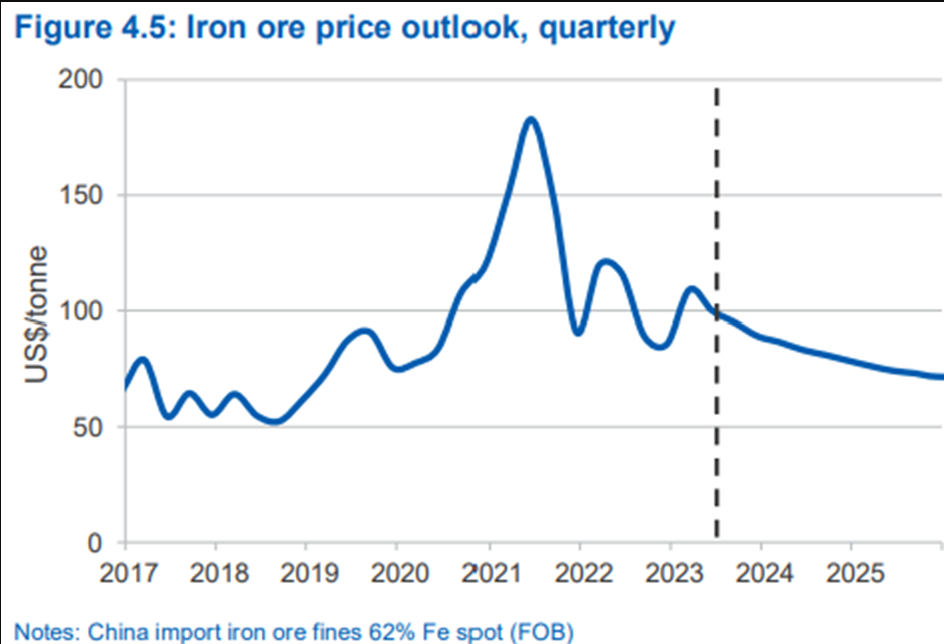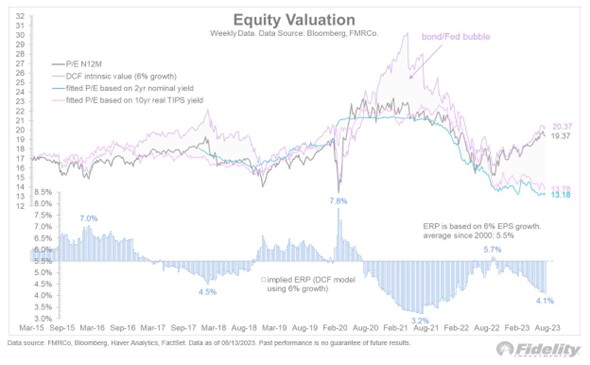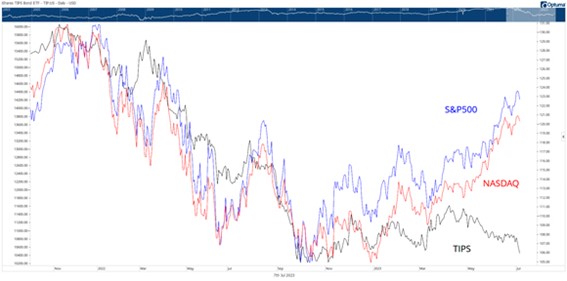ASX iron ore stocks in structural decline?
Huge debt, ageing population — is China past its peak?
So ran a recent headline in The Australian.
And usually when such headlines hit the front pages, the news is priced in.
In this episode of What’s Not Priced In, Greg Canavan and I assess the worries surrounding China’s ailing economy.
Do Aussie investors have anything to fret about?
You’ll have to watch the full episode, but Greg did warn that the iron ore miners could see a downgrade cycle from here.
Iron ore miners could see a downgrade cycle from here
We then discussed the overall market, pointing out that when valuations are stretched, it doesn’t take much for things to snap.
We ended with advice from Warren Buffett — the stock market is a device for transferring money from the impatient to the patient.
China’s economic worries
Whether China is past its peak or not, we’ve certainly hit peak China coverage.
The country’s exports are slumping.
Imports are down, too.
Lending is hitting new lows with new bank loans falling 89% in July, the lowest level since late 2009.
New home prices fell for the first time this year.
And unlike its advanced economy peers, China is dealing with deflation.
But while China’s slowdown is the story of the week, is it a big story in general?
Well, China’s plight warranted a mention in the recent Reserve Bank Board meeting minutes, with the central bank revising its outlook lower for the world’s second-largest economy:
‘Members noted that the outlook for the Chinese economy had been revised lower and was subject to a high degree of uncertainty.
‘Members observed that growth in Australia’s major trading partners was expected to be lower than forecast in May, at around 3¼ % in 2023 and 3% in 2024 — well below the pre-pandemic longer-run average. The downgrade partly reflected the revision to the outlook for China.’
And the Aussie dollar took a tumble last week.
Aussie dollar falls
The Australian dollar is weakening against major currencies, falling to its weakest level against the USD since November 2022.
It’s now trading at ~64.10 US cents, falling about 5% this month alone.
What does this mean for the Australian market and Aussie investors?
For Greg, the slumping Aussie dollar isn’t a nothing-burger, but neither is it something to lose hair over.
Aussie investors have more pressing things to worry about — like falling household spending. More on that later.
Iron ore stocks in danger
The biggest concern from an enervated China is for iron ore miners.
After all, China accounts for almost 60% of global iron ore demand.
Waning demand from China is likely to depress spot prices.
The latest resources and energy quarterly from the Department of Industry, Science and Resources predicted iron ore prices to ‘steadily fall to an average of about US$74 per tonne by 2025.’

That spells bad news for iron ore miners, despite their efficiencies and margins.
Heavyweights like BHP Group [ASX:BHP], Fortescue Metals Group [ASX:FMG] and Rio Tinto [ASX:RIO] are still trading on optimistic projections.
Greg analysed the trio, arguing the consensus earnings forecasts are too rosy.
Iron ore stocks could face a downgrade cycle as reality sets in.
The Department of Industry, Science and Resources noted that ‘moderating prices over the outlook period are forecast to lead to lower iron ore earnings, with exports of $110 billion in 2023–24, and $93 billion in 2024–25.’
The miners are highly unlikely to sustain the exceptional profitability on iron ore booked in recent years.

Speaking of BHP, I recently did a valuation of BHP and found it a tad overvalued when you use reasonable profitability assumptions.
But now, onto the Aussie consumer.
Australian households feeling the pain
Irrespective of any spillover effects from China, the Aussie consumer is feeling the pain from rising interest rates.
Our mortgage payments are rising as a share of disposable income and we’re putting less in offset accounts.
That’s from the latest RBA meeting minutes:
‘Scheduled mortgage payments as a share of household disposable income increased to 9.4% in the June quarter, around its historical peak. Voluntary principal payments into borrowers’ offset and redraw accounts declined in the June quarter. Net flows into these accounts had declined to be noticeably lower than the pre-pandemic average, consistent with pressures on disposable incomes.’
Households are ferreting less money into offset and redraw accounts than the average set before the pandemic.
And we haven’t felt the full brunt of the RBA’s tightening yet, either.
As the central bank said:
‘Members noted that the full effects of the earlier tightening were yet to be recorded in the data. Even so, consumption had already slowed significantly, there were early signs that the labour market might be at a turning point and inflation was heading in the right direction.’
Interestingly, this confluence of outcomes is giving the RBA hope it may have reached the terminus of its interest rate hikes.
In the minutes, the RBA dropped this hint:
‘Considering this and the forecasts, members observed that there was a credible path back to the inflation target with the cash rate staying at its present level.’
Earnings season
Last week, CommSec released some interesting aggregate data on the local earnings season so far.
At the halfway mark, the aggregate results for ASX stocks reporting full-year results are as follows:
- Revenue up by 11%
- Expenses up by 17%
- Net profit down by 30.8%
- Cash down by 12%
- Dividends up by 4%
The net profit slump is the standout reading. And suggests companies have suffered from cost inflation and waning consumer demand in FY23.
However, CommSec also reported that the average stock performance on the day of earnings release was minus 0.1%.
Not too bad, suggesting the hit to earnings was largely foreseen by the market.
It’s all about looking at the reaction to the results rather than the results themselves.
The market generally has a pretty good idea of what the numbers will be.
Surprises move share prices.
Beware jaws, may snap shut
Now onto something we’ve pointed to before — the divergence between fundamentals and valuations.
Earlier this week, Fidelity’s Jurrien Timmer shared this chart.

Timmer explained:
‘Equity valuations have moved on from the rising-rate narrative to a soft-landing/earnings-recovery narrative. If that doesn’t take place and the Fed stays hawkish, there is a risk that the ‘jaws’ in the chart below will close, at least partly.’
Avid listeners of the pod will see similarities between this chart to one that we trotted out in an earlier episode.
Here’s the Jaws of Death we featured on the show:

It plots the two major US stock market indices against the price of the US Treasury Inflation-Protected Securities (TIPS).
When the price of TIPS falls, real yields rise…and usually stocks fall.
Not so of late.
Instead of tracking lower with the price of TIPS, US stocks have diverged.
How long can that last?
As Timmer noted, the risk remains that higher for longer interest rates lead to the jaws snapping shut.
Ouch!
Patience, roadkill, and uncertainty
Greg and I ended the episode with a discussion of why investing is so hard.
And it is hard.
All the certainties are priced in, and all the obvious implications are accounted for.
It’s in the uncertainty that outperformance resides, along with risk and disappointment.
Outperformance also requires patience, as the Warren Buffett quote attests:
‘The stock market is a device for transferring money from the impatient to the patient.’
Greg then profiled a ‘roadkill’ stock currently on his watchlist.
Sometimes, a stock repels the market but offers an opportunity to the gutsy and patient investor who looks beyond the current mess to spot the enduring value.
Enjoy the episode!
5 topics
3 stocks mentioned
1 contributor mentioned
.png)
.png)